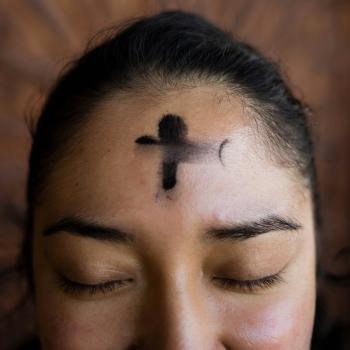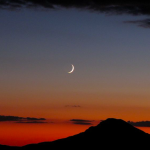 On August 6, the world remembers the bombing of Hiroshima. A great amount of unstable energy, without mercy, without pity, was let loose upon the city, destroying it and its population in one quick surge of power. The first of two cities, sacrificed to save the world – so we were told.
On August 6, the world remembers the bombing of Hiroshima. A great amount of unstable energy, without mercy, without pity, was let loose upon the city, destroying it and its population in one quick surge of power. The first of two cities, sacrificed to save the world – so we were told.
In contrast to this, August 6 is also the day on which Christians remember the Transfiguration. On that day, all so long ago, Jesus revealed his inner glory, the light of Tabor, to Peter, James and John. The light was the light which shines throughout the world, the uncreated energy of God. Breaking up the darkness of hate, this light shines in the hearts and minds of believers, bringing the fruit of the spirit with it (peace, joy and love). “We bear witness that ‘God is light,’ and those to whom it has been granted to see Him have all beheld Him as light. Those who have received Him have received Him as light, because the light of His glory goes before Him, and it is impossible for Him to appear without light.“[1] Those who knew Jesus saw him first according to the flesh, according to his humanity; the light was there but they saw it not. It is the light of glory, the radiance of holiness. It was there, but never seen; only those who are spiritually ready can see it.[2]Yet, that glory, the glory of the Lord which was to be revealed to the world by Jesus’ death and resurrection had to be made known to some in anticipation of it, to provide his followers a way to understand his person, to know the glory was his in all eternity. He was not adopted to sonship at the resurrection: he was from all eternity the only-begotten Son of God.[3]Since it provided a foretaste of the glory of the resurrection, it did more than reveal Jesus’ glory; it was a demonstration of the grace which is to come to the world, cleaning it, healing it, preparing it for the eschatological reign of God. “The transfiguration of the earthly Jesus, of his earthly clothes and in some manner of the world upon which he shines, is the promise of the first installment of the eschatological transformation of the world as a whole, and for Paul this truly begins with the living of the Christian life – as a reflection of the glory of Christ – in a way that is both invisible and visible (2 Cor 3).“[4]
The light which shined forth at Tabor is the humble radiance of holiness, a beautiful light which is over all things, merging with them, making them beautiful in return. “Spiritual light is the light whose seeing constitutes the contemplation of God, and therefore, our salvation, the salvation of us who cannot be without God.“[5] It is deifying, and those who merge themselves with it are like candles, radiating light in imitation of the Sun of Righteousness (Mal. 4:2). God’s glory shines through the saints as represented in iconography by the halo. That light can shine in and through all of us. Like Peter, James and John, we can experience it, and with it, experience the glory of the resurrection. “Patristic tradition in fact unanimously interprets the Gospel story of the Transfiguration as a foretaste of the Second Coming. But the Second Coming is already a living reality for the Christian in his sacramental life and spiritual experience: the Kingdom to come is already ‘within us,’ until the full manifestation of its glory on the last day.“[6]
The beatitudes tell us that the pure at heart shall see God. And that is what we find, time and again, happening in the life of the saints; they have seen the glory of God, the same glory revealed at Tabor. “This same vision was seen in the present age by the chosen among the apostles on Thabor, by Stephen when he was being stoned, and by Anthony in his battle for inner stillness – indeed by the saints, that is, the pure in heart, as one can learn if one wishes from their own written lives and biographies.“[7] It must be made clear, it is God who is seen, even if what God is transcends what we see. The East tells us that we see the energy, the work of God, but not God’s hidden, incomprehensible essence. “According to the true faith of God’s Church which by His grace we hold, God possesses inherent energy that makes Him manifest and in this respect distinct from His essence.“[8] That is, the energy and essence of God are logically distinct. But this must not make us think it is not God we experience. Where the energy of God is, God is; it is truly God we encounter. “Obviously, my friend, the uncreated essence and the uncreated energy are inseparable from each other. For neither of them is even seen separate from the other. And so there is in essence and energy one uncreated divinity of the Father, the Son and the Holy Spirit.“[9]
What a great difference lies in these two events, both commemorated on the same day. One we know actually took place on this day in history, the other did not; as Sergius Bulgakov points out, the feast comes to us out of nowhere, outside of the expected sequence of events in the liturgical year.[10] Yet it seems to be an act of providence which brings them together. Two different powers, two different ways of salvation are put side by side. The human way of “salvation” is destructive, and destroys what it cannot control, destroys all that is in its path, corrupting the souls of those who try to control it, and leaves the peace of death in its wake. The divine way of salvation is beautiful, constructive, bringing balance to that which is out of control, infusing its holiness upon those who follow it, leading them not to the peace of the grave, but the joy of eternal life. One light, created in pride, was shown to the world; its one bright and glorious moment brought the darkness of death in its wake. The other light, uncreated, ever-existing and ever the same, humbly shines forth in all eternity, bringing life to those who were once dead. The darkness can never know it, never comprehend it, nor extinguish it. For that divine light, revealed to the Apostles in secret, “attests to the glory of the future age, revealed in the parousia, the Second Coming.“[11]
Footnotes
[1]St. Symeon the New Theologians. The Discourses. trans. C. J. deCatanzara (Mahwah, NJ: Paulist Press, 1980), 298.
[2] “To beginners He appears in the form of a servant (cf. Phil. 2: 7); to those able to follow Him as He climbs the high mountain of His transfiguration He appears in the form of God (cf. Matt 17: 1 – 9), the form in which He existed before the world came to be (cf. John 17: 5). It is therefore possible for the same Lord not to appear in the same way to all who stand before Him, but to appear to some in one way and to others in another way, according to the measure of each person’s faith,” St. Maximos the Confessor, “Second Century on Theology,” pgs. 137 – 163 in The Philokalia: The Complete Text, Volume II. End. G.E.H. Palmer, Philip Sherrard, and Kallistos Ware (London: Faber and Faber, 1990): 140 (#13).
[3]Cf. Sergius Bulgakov. Churchly Joy. trans. Boris Jakin (Grand Rapids, MI: William B Eerdman’s Publishing Company, 2008), 139.
[4]Hans Urs von Balthasar. The Glory of the Lord VII: Theology, The New Covenant. trans. Brian McNeil (San Francisco: Ignatius Press, 1989), 347.
[5]Pavel Florensky. The Pillar and Ground of the Truth. trans. Boris Jakim (Princeton: Princeton University Press, 1997), 70.
[6]John Meyendorff. St Gregory Palamas and Orthodox Spirituality(Crestwood, NY: St Vladimir’s Seminary Press, 1998), 111.
[7]St. Gregory Palams. The Triad. trans. Nicholas Gende (Mahwah, NJ: Paulist Press, 1983),67 -8.
[8]St. Gregory Palamas, “Topics of Natural and Theological Science,” pgs. 346 – 417 in The Philokalia: The Complete Text, Volume IV. End. G.E.H. Palmer, Philip Sherrard, and Kallistos Ware (London: Faber and Faber, 1995): 411.
[9]St. Gregory Palamas. Dialogue Between and Orthodox and a Barlaamite. trans. Rein Ferwerda (Binghamtom, NY: Binghamton University, 1999), 57
[10]See Sergius Bulgakov. Churchly Joy, 138.
[11]Sergius Bulgakov. Churchly Joy, 139.












